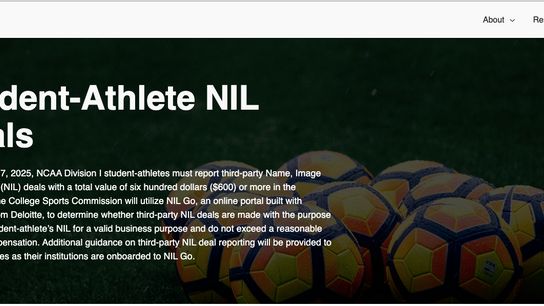Three weeks into the House Settlement era, it's Atlantic Coast Conference Commissioner Jim Phillips with the latest data on agents and athletes utilizing the new College Sports Commission's mandatory NIL GO database.
The system, enforced by international accounting firm Deloitte and stipulated as part of the House Settlement for any present or future Name, Image and Likeness deals worth $600 or more to student-athletes, already has thousands of athlete- and agent-users, according to Phillips on the heels of his most recent conversation with CSC's Bryan Seeley, the organization's chief executive office whom it hired away from Major League Baseball earlier this summer.
"I think it's helpful, because I talked to Bryan within the last 24 hours," Phillips told reporters Tuesday at ACC Kickoff in Charlotte. "Just so you know a little bit about, like NIL Go, who's registered. Let me give you these numbers:
"Student-athletes, 15,519. Reps and agents, 1,970. Average daily logins, about 600 student-athletes a day are getting on NIL Go."
How many of those athletes and agents are submitting NIL deal-proposals? And how many are getting approval from Deloitte via the CSC?
"Approved deals, I don't have that number," Phillips said.
Echoing the sentiments of Southeastern Conference coaches in their recent comments at SEC media days regarding the need for true "enforcement" of the $20.5 million revenue-sharing number, Phillips also cites that as a key and believes Seeley is positioning the CSC to help supply guardrails -- essentially nonexistent in college athletics much of the past five years -- back into NCAA sports.
"It's about communication, implementation, and compliance," Phillips said. "That's part of what Bryan is trying to do. Overall, he's watching the enterprise and what the settlement agreement has allowed. Rev share, for the first time, and staying within the $20.5 million, legitimate NIL agreements, not pay-for-play, but legitimate, where the student-athlete is performing something in return for the dollars, and roster limits, which I spoke about a little bit earlier in my remarks.
"We've taken off some of these restrictions on scholarship limits and some of that. He's done a really good job. I go back to why did we want to set this up? It was about setting up a standardized set of rules. It was about transparency, which we haven't had in the NIL era, and the ability when we began having the ability to pay student-athletes, and enforcement. That's where we're headed."
With Deloitte as the neutral arbiter, the CSC has a three-pronged evaluative method it has said it utilizes to examine and either approve or deny potential NIL deals.
Those three tenets are: Payor association (relationship with business/entity and the athlete's school); Valid business purpose (commercial transaction as opposed to pay-for-play); Range of compensation (does the offered amount reasonably reflect the actual marketplace).
There are three ruling outcomes: cleared, non-cleared and flagged for additional review.
A not-cleared proposal can be revised, cancelled or requested to be reviewed by yet an additional third-party arbiter.
Phillips knows inevitably coaches, athletes and programs are going to test the boundaries of the House Settlement and college athletics' new general framework.
"When I said earlier, with the emphasis on restraint, I meant it," Phillips said. "We can't help ourselves sometimes. People know what the rules are relative to ($) 20.5 (million). They know what legitimate NIL is.
"You can play in that gray area if you want, but all that does is undermine a new structure."
